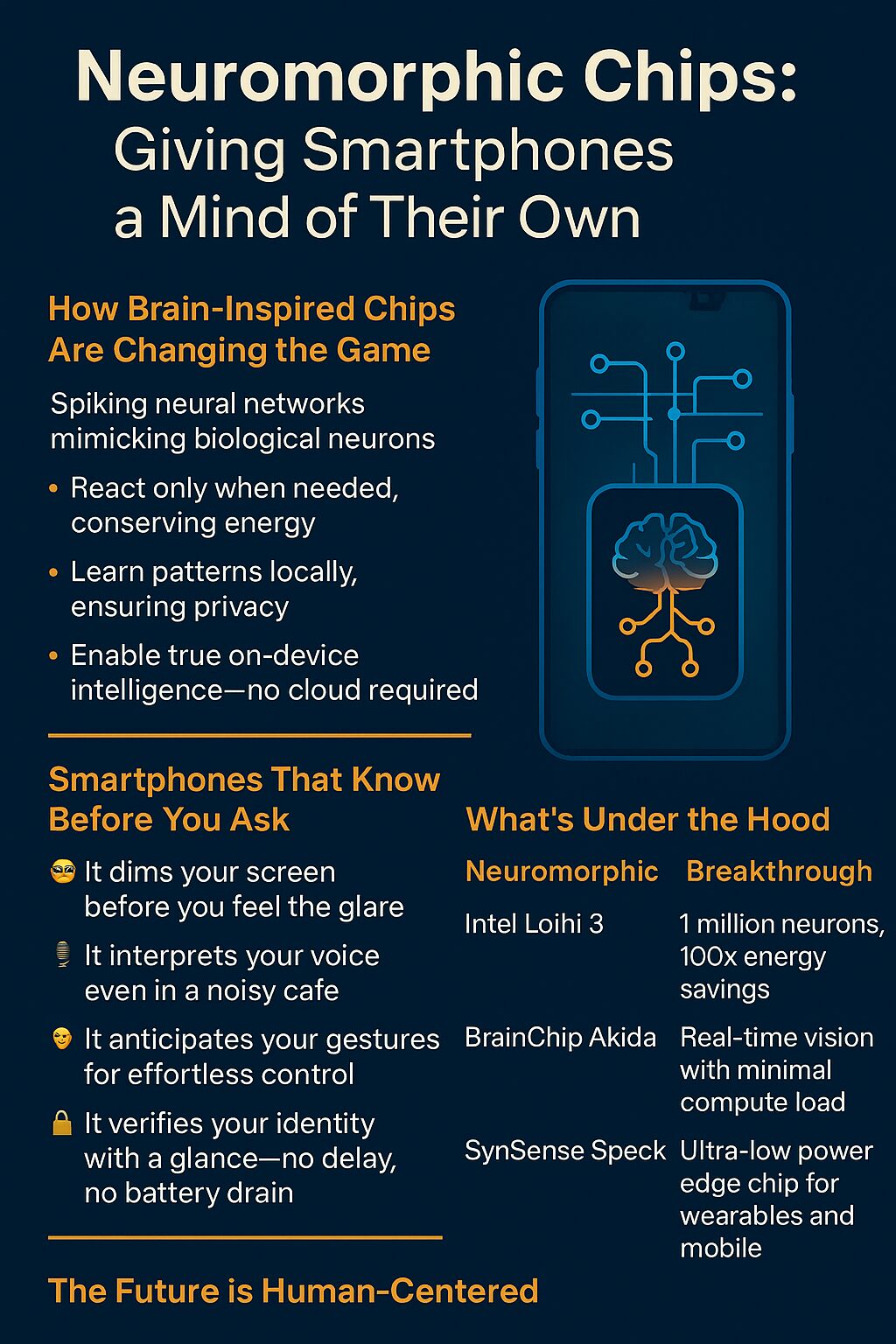Introduction
In 2025, neuromorphic chips are redefining what smartphones can do. Inspired by the human brain, these chips enable real-time AI, ultra-low power consumption, and on-device learning—without relying on cloud servers. As mobile devices become smarter, faster, and more autonomous, neuromorphic computing is emerging as the core architecture behind the next wave of innovation.
This article explores how neuromorphic chips work, why they matter, and how they’re reshaping the mobile experience.
🧬 What Are Neuromorphic Chips?
Neuromorphic chips mimic the structure and function of biological neurons. Unlike traditional CPUs and GPUs, they use spiking neural networks (SNNs) and event-driven processing to:
- 🔄 Process and store data simultaneously (in-memory computing)
- ⚡ Fire only when needed, saving energy
- 🧠 Learn and adapt on-device without cloud dependency
- 🔍 Handle real-time tasks like vision, speech, and gesture recognition
This architecture allows smartphones to think more like humans—efficiently and intuitively.
📱 Why Neuromorphic Chips Are Ideal for Smartphones
| Feature | Benefit for Mobile Devices |
|---|---|
| Energy Efficiency | Extends battery life by up to 10x |
| Real-Time Processing | Enables instant decision-making for AR, voice, and vision |
| Privacy-Preserving AI | Keeps data on-device, reducing cloud exposure |
| Always-On Intelligence | Supports ambient sensing and contextual awareness |
| Compact Design | Fits into small form factors without overheating |
These advantages make neuromorphic chips the perfect match for next-gen smartphones.
🌍 Real-World Applications in Mobile AI
Neuromorphic chips are already powering breakthrough features:
- 📸 Real-Time Computer Vision: Enables object detection and facial recognition without lag
- 🎙️ Voice Assistants: Processes speech locally for faster, more private interactions
- 🧭 Gesture Control: Detects hand movements for touchless navigation
- 🔐 Security: Performs biometric authentication with minimal power draw
- 🧘 Health Monitoring: Tracks motion and vitals using edge AI sensors
These capabilities are transforming smartphones into context-aware companions.
⚙️ Key Players and Technologies
Several companies are leading the neuromorphic revolution:
- Intel Loihi 3: 1M neurons, 100x energy savings over GPUs
- BrainChip Akida: Event-based vision processing for mobile and IoT
- SynSense Speck: Ultra-low-power neuromorphic chip for wearables
Open-source tools like Nengo, NxSDK, and SNNToolbox are helping developers build neuromorphic apps for mobile platforms.
📈 SEO Tips for Neuromorphic Content Creators
✅ Search-Friendly Titles
- “Neuromorphic Chips in Smartphones: The Future of Mobile AI”
- “Brain-Inspired Chips Revolutionize Mobile Devices in 2025”
✅ High-Impact Keywords
- “neuromorphic smartphone chips”
- “spiking neural networks mobile AI”
- “on-device AI processing”
✅ Metadata Optimization
- Alt Text: “Neuromorphic chip powering smartphone AI”
- Tags: #NeuromorphicAI #MobileInnovation #EdgeComputing #Smartphones2025
Conclusion
Neuromorphic chips are more than a technological upgrade—they’re a paradigm shift. By mimicking the brain’s efficiency and adaptability, they’re enabling smartphones to become smarter, faster, and more human-like.

